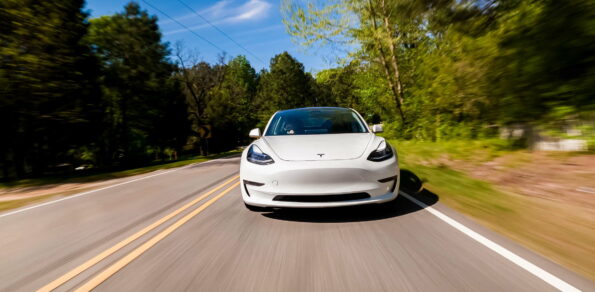Range anxiety is the worry that you won’t make it to the next charging point, and it’s a valid concern with EVs because charging stations are not as common as petrol stations. So, if your range estimate suddenly drops and you’re not sure if you can make it, what can you do to extend your range?

Turn off all auxiliary features
Everything in your car uses the battery, so turn everything off that is not needed (not the lights if it’s dark, but definitely the high beam lights). This means no heated seat, no air conditioning, no fan and no radio. Unplug your phone from the charger. Dim the lights on the dashboard. Some of these aren’t going to make a huge difference, but it could mean that extra 200m that gets you to your destination rather than walking through pouring rain or sweltering heat.
Anticipate
The number one key to smooth, economical driving is to anticipate what’s going to happen ahead. Poor anticipation usually means that you have to adjust your speed more than necessary. While you get some battery charge when slowing down, it’s not as much as you use getting back up to speed. Therefore, anticipation means you can smooth out the changes in speed. A particularly useful one is trying to understand when the traffic lights will change green so that you reach them as this happens. This means you are still rolling. Truck drivers use this technique all the time. You’ll use the most power getting going from a standstill, so maintaining some momentum makes a significant difference in how much power you use.
Brake early and gently
The battery can only accept a certain amount of charge, and braking really hard can exceed this. To get the maximum charge, start braking early and gently.
Accelerate slowly
The faster the acceleration, the more power you use.
Don’t tailgate
It’s tempting to tailgate to slipstream the vehicle in front, but for it to be effective you have to be so close you’re more at risk of having a crash by running into the back of them, and you’ll end up having to slow down and speed up more to adjust your speed to match theirs. It’s a bad idea.
Coast downhill
Let gravity do the work, and use the brake gently to maintain your speed and get the maximum recharge.
Keep your speed down
Faster speeds mean more wind resistance. Obviously you shouldn’t be driving slow enough to be a hazard, but you shouldn’t be doing 100km/h, either.
Tyre pressures
Keep your tyres pumped up to the recommended pressure or very slightly more (but not much more otherwise you’ll cause uneven tyre wear). Harder tyres roll more easily, but bear in mind that harder tyres also have less tyre in contact with the road which means less grip on the road.
Change mode
If your car has an eco mode, switch to it. Your car might also have a readout showing you how much power you are using. You may be able to figure out which style of driving gives you the best economy.
Stop and delay travelling for a while
This is relevant for two scenarios:
- Traffic is bad and you’re crawling along, stopping and starting, or driving at an inefficient speed
- The weather is cold and is likely to warm up (you’ll get a few more kilometres if it’s warmer outside).
Manually control your regenerative braking
Some vehicles allow you to control the level of regenerative braking. This can be useful when in hilly terrain. The car will do a reasonable job of recouping the energy it can, but you might find scenarios where controlling the amount of braking gives you better results.
Be careful with cruise control
On flat, empty roads, cruise control will keep your speed constant, which is good, but on hilly roads, cruise control will sap your battery as it tries to maintain your speed up the hills.
